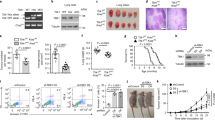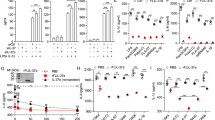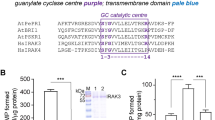Abstract
Pneumonia, the most typical and frequent lower respiratory tract infection (LRTI), is a leading cause of health problems in the United States. Bacteria represent the most prevailing cause of pneumonia in both children and adults. Although pneumonia with a single bacterial infection is common, a significant portion of patients with pneumonia is polymicrobial. This infection is often complexed with other physiological factors such as cytokines and growth factors. Nontypeable Haemophilus influenzae (NTHi) is the most frequently recovered Gram-negative bacterial pathogen in the respiratory system and induces strong inflammatory responses. NTHi also synergizes with other respiratory pathogens, such as Streptococcus pneumoniae and respiratory viruses and pro-inflammatory cytokines, such as tumor necrosis factor-alpha (TNF-α). It is noteworthy that NTHi not only synergizes with growth factors such as transforming growth factor-beta (TGF-β), but also utilizes growth factor receptors such as TGF-β receptor and epidermal growth factor receptor (EGFR), to enhance inflammatory responses. Although appropriate inflammation is a protective response against invading pathogens, an uncontrolled inflammatory response is often detrimental to the host. Thus, inflammation must be tightly regulated. The human immune system has evolved strategies for controlling overactive inflammatory response. One such important mechanism is via regulation of negative feedback regulators for inflammation. CYLD, a multifunctional deubiquitinase, was originally reported as a tumor suppressor, but was recently identified as a negative regulator for nuclear factor-kappa B (NF-κB) signaling. It is induced by NTHi and TNF-α via a NF-κB-dependent mechanism, thereby serving as an inducible negative feedback regulator for tightly controlling inflammation in NTHi infection.
This is a preview of subscription content, access via your institution
Access options
Subscribe to this journal
Receive 12 digital issues and online access to articles
$119.00 per year
only $9.92 per issue
Buy this article
- Purchase on Springer Link
- Instant access to full article PDF
Prices may be subject to local taxes which are calculated during checkout

Similar content being viewed by others
References
Nicolau D . Clinical and economic implications of antimicrobial resistance for the management of community-acquired respiratory tract infections. J Antimicrob Chemother 2002; 50 (Suppl S1): 61–70.
Brixner DI . Clinical and economic outcomes in the treatment of lower respiratory tract infections. Am J Manag Care 2004; 10: S400–S407.
Guthrie R . Community-acquired lower respiratory tract infections: etiology and treatment. Chest 2001; 120: 2021–2034.
Khair OA, Davies RJ, Devalia JL . Bacterial-induced release of inflammatory mediators by bronchial epithelial cells. Eur Respir J 1996; 9: 1913–1922.
Ishinaga H, Jono H, Lim JH, Kweon SM, Xu H, Ha UH et al. TGF-beta induces p65 acetylation to enhance bacteria-induced NF-kappaB activation. EMBO J 2007; 26: 1150–1162.
Kweon SM, Wang B, Rixter D, Lim JH, Koga T, Ishinaga H et al. Synergistic activation of NF-kappaB by nontypeable H. influenzae and S. pneumoniae is mediated by CK2, IKKbeta–IkappaBalpha, and p38 MAPK. Biochem Biophys Res Commun 2006; 351: 368–375.
Lim JH, Jono H, Ha UH, Xu H, Ishinaga H, Morino S et al. Streptococcus pneumoniae synergizes with nontypeable Haemophilus influenzae to induce inflammation via upregulating TLR2. BMC Immunol 2008; 9: 40.
Ratner AJ, Lysenko ES, Paul MN, Weiser JN . Synergistic proinflammatory responses induced by polymicrobial colonization of epithelial surfaces. Proc Natl Acad Sci USA 2005; 102: 3429–3434.
Watanabe T, Jono H, Han J, Lim DJ, Li JD . Synergistic activation of NF-kappaB by nontypeable Haemophilus influenzae and tumor necrosis factor alpha. Proc Natl Acad Sci USA 2004; 101: 3563–3568.
Deng JC, Cheng G, Newstead MW, Zeng X, Kobayashi K, Flavell RA et al. Sepsis-induced suppression of lung innate immunity is mediated by IRAK-M. J Clin Invest 2006; 116: 2532–2542.
Lee EG, Boone DL, Chai S, Libby SL, Chien M, Lodolce JP et al. Failure to regulate TNF-induced NF-kappaB and cell death responses in A20-deficient mice. Science 2000; 289: 2350–2354.
Lim JH, Ha UH, Woo CH, Xu H, Li JD . CYLD is a crucial negative regulator of innate immune response in Escherichia coli pneumonia. Cell Microbiol 2008; 10: 2247–2256.
Lim JH, Jono H, Koga T, Woo CH, Ishinaga H, Bourne P et al. Tumor suppressor CYLD acts as a negative regulator for non-typeable Haemophilus influenza-induced inflammation in the middle ear and lung of mice. PLoS ONE 2007; 2: e1032.
Sun SC . CYLD: a tumor suppressor deubiquitinase regulating NF-kappaB activation and diverse biological processes. Cell Death Differ 2010; 17: 25–34.
Kyd J, Cripps A . Nontypeable Haemophilus influenzae: challenges in developing a vaccine. J Biotechnol 1999; 73: 103–108.
Li JD . Exploitation of host epithelial signaling networks by respiratory bacterial pathogens. J Pharmacol Sci 2003; 91: 1–7.
Murphy TF, Bakaletz LO, Smeesters PR . Microbial interactions in the respiratory tract. Pediatr Infect Dis J 2009; 28: S121–S126.
Ferrero-Miliani L, Seidelin JB, Nielsen OH . Regulation of cytokine production in inflammatory bowel disease. Ugeskr Laeger 2006; 168 1847–1850. Danish.
Medzhitov R . Origin and physiological roles of inflammation. Nature 2008; 454: 428–435.
Chartrand SA, Pong A . Acute otitis media in the 1990s: the impact of antibiotic resistance. Pediatr Ann 1998; 27: 86–95.
Gates GA . Cost-effectiveness considerations in otitis media treatment. Otolaryngol Head Neck Surg 1996; 114: 525–530.
Minino AM, Arias E, Kochanek KD, Murphy SL, Smith BL . Deaths: final data for 2000. Natl Vital Stat Rep 2002; 50: 1–119.
Moghaddam SJ, Ochoa CE, Sethi S, Dickey BF . Nontypeable Haemophilus influenzae in chronic obstructive pulmonary disease and lung cancer. Int J Chron Obstruct Pulmon Dis 2011; 6: 113–123.
Rubinstein AL, Irazola VE, Bazzano LA, Sobrino E, Calandrelli M, Lanas F et al. Detection and follow-up of chronic obstructive pulmonary disease (COPD) and risk factors in the Southern Cone of Latin America: the pulmonary risk in South America (PRISA) study. BMC Pulm Med 2011; 11: 34.
Moon SK, Lee HY, Pan H, Takeshita T, Park R, Cha K et al. Synergistic effect of interleukin 1 alpha on nontypeable Haemophilus influenzae-induced up-regulation of human beta-defensin 2 in middle ear epithelial cells. BMC Infect Dis 2006; 6: 12.
ten Dijke P, Hill CS . New insights into TGF-beta–Smad signalling. Trends Biochem Sci 2004; 29: 265–273.
Wahl SM . Transforming growth factor beta: the good, the bad, and the ugly. J Exp Med 1994; 180: 1587–1590.
Huynh ML, Fadok VA, Henson PM . Phosphatidylserine-dependent ingestion of apoptotic cells promotes TGF-beta1 secretion and the resolution of inflammation. J Clin Invest 2002; 109: 41–50.
Xu XS, Steere RR, Fedorchuk CA, Pang J, Lee JY, Lim JH et al. Activation of epidermal grwoth factor receptor is required for NTHi-induced NF-κB-dependent inflammation. PLoS ONE 2011; 6: e28216.
Jiang T, Grabiner B, Zhu YF, Jiang CY, Li HX, You Y et al. CARMA3 is crucial for EGFR-induced activation of NF-kappaB and tumor progression. Cancer Res 2011; 71: 2183–2192.
Ozyilmaz E, Akan OA, Gulhan M, Ahmed K, Nagatake T . Major bacteria of community-acquired respiratory tract infections in Turkey. Jpn J Infect Dis 2005; 58: 50–52.
Wilkinson TM, Hurst JR, Perera WR, Wilks M, Donaldson GC, Wedzicha JA et al. Effect of interactions between lower airway bacterial and rhinoviral infection in exacerbations of COPD. Chest 2006; 129: 317–324.
Lee LN, Dias P, Han D, Yoon S, Shea A, Zakharov V et al. A mouse model of lethal synergism between influenza virus and Haemophilus influenzae. Am J Pathol 2010; 176: 800–811.
Hamerman JA, Jarjoura JR, Humphrey MB, Nakamura MC, Seaman WE, Lanier LL . Cutting edge: inhibition of TLR and FcR responses in macrophages by triggering receptor expressed on myeloid cells (TREM)-2 and DAP12. J Immunol 2006; 177: 2051–2055.
Metcalf D, Mifsud S, Di Rago L, Nicola NA, Hilton DJ, Alexander WS . Polycystic kidneys and chronic inflammatory lesions are the delayed consequences of loss of the suppressor of cytokine signaling-1 (SOCS-1). Proc Natl Acad Sci USA 2002; 99: 943–948.
Bignell GR, Warren W, Seal S, Takahashi M, Rapley E, Barfoot R et al. Identification of the familial cylindromatosis tumour-suppressor gene. Nat Genet 2000; 25: 160–165.
Brummelkamp TR, Nijman SM, Dirac AM, Bernards R . Loss of the cylindromatosis tumour suppressor inhibits apoptosis by activating NF-kappaB. Nature 2003; 424: 797–801.
Kovalenko A, Chable-Bessia C, Cantarella G, Israël A, Wallach D, Courtois G . The tumour suppressor CYLD negatively regulates NF-kappaB signalling by deubiquitination. Nature 2003; 424: 801–805.
Trompouki E, Hatzivassiliou E, Tsichritzis T, Farmer H, Ashworth A, Mosialos G et al. CYLD is a deubiquitinating enzyme that negatively regulates NF-kappaB activation by TNFR family members. Nature 2003; 424: 793–796.
Chen Z, Hagler J, Palombella VJ, Melandri F, Scherer D, Ballard D et al. Signal-induced site-specific phosphorylation targets I kappa B alpha to the ubiquitin-proteasome pathway. Genes Dev 1995; 9: 1586–1597.
Chen ZJ . Ubiquitin signalling in the NF-kappaB pathway. Nat Cell Biol 2005; 7: 758–765.
Massoumi R . Ubiquitin chain cleavage: CYLD at work. Trends Biochem Sci 2010; 35: 392–399.
Ahmed N, Zeng M, Sinha I, Polin L, Wei WZ, Rathinam C et al. The E3 ligase Itch and deubiquitinase Cyld act together to regulate Tak1 and inflammation. Nat Immunol 2011; 12: 1176–1183.
Reiley WW, Jin W, Lee AJ, Wright A, Wu X, Tewalt EF et al. Deubiquitinating enzyme CYLD negatively regulates the ubiquitin-dependent kinase Tak1 and prevents abnormal T cell responses. J Exp Med 2007; 204: 1475–1485.
Courtois G . Tumor suppressor CYLD: negative regulation of NF-kappaB signaling and more. Cell Mol Life Sci 2008; 65: 1123–1132.
Jin W, Chang M, Paul EM, Babu G, Lee AJ, Reiley W et al. Deubiquitinating enzyme CYLD negatively regulates RANK signaling and osteoclastogenesis in mice. J Clin Invest 2008; 118: 1858–1866.
Jin W, Reiley WR, Lee AJ, Wright A, Wu X, Zhang M et al. Deubiquitinating enzyme CYLD regulates the peripheral development and naive phenotype maintenance of B cells. J Biol Chem 2007; 282: 15884–15893.
Lee AJ, Zhou X, Chang M, Hunzeker J, Bonneau RH, Zhou D et al. Regulation of natural killer T-cell development by deubiquitinase CYLD. EMBO J 2010; 29: 1600–1612.
Reiley WW, Jin W, Lee AJ, Wright A, Wu X, Tewalt EF et al. Deubiquitinating enzyme CYLD negatively regulates the ubiquitin-dependent kinase Tak1 and prevents abnormal T cell responses. J Exp Med 2007; 204: 1475–1485.
Wright A, Reiley WW, Chang M, Jin W, Lee AJ, Zhang M et al. Regulation of early wave of germ cell apoptosis and spermatogenesis by deubiquitinating enzyme CYLD. Dev Cell 2007; 13: 705–716.
Reiley WW, Zhang MY, Jin W, Losiewicz M, Donohue KB, Norbury CC et al. Regulation of T cell development by the deubiquitinating enzyme CYLD. Nat Immunol 2006; 7: 411–417.
Trompouki E, Tsagaratou A, Kosmidis SK, Dolle P, Qian J, Kontoyiannis DL et al. Truncation of the catalytic domain of the cylindromatosis tumor suppressor impairs lung maturation. Neoplasia 2009; 11: 469–476.
Reiley WW, Zhang M, Jin W, Losiewicz M, Donohue KB, Norbury CC et al. Regulation of T cell development by the deubiquitinating enzyme CYLD. Nat Immunol 2006; 7: 411–417.
Massoumi R, Chmielarska K, Hennecke K, Pfeifer A, Fassler R . Cyld inhibits tumor cell proliferation by blocking Bcl-3-dependent NF-kappaB signaling. Cell 2006; 125: 665–677.
Zhang J, Stirling B, Temmerman ST, Ma CA, Fuss IJ, Derry JMJ et al. Impaired regulation of NF-kappaB and increased susceptibility to colitis-associated tumorigenesis in CYLD-deficient mice. J Clin Invest 2006; 116: 3042–3049.
Yoshida H, Jono H, Kai H, Li JD . The tumor suppressor cylindromatosis (CYLD) acts as a negative regulator for Toll-like receptor 2 signaling via negative cross-talk with TRAF6 and TRAF7. J Biol Chem 2005; 280: 41111–41121.
Jono H, Lim JH, Chen LF, Xu H, Trompouki E, Pan ZK et al. NF-kappaB is essential for induction of CYLD, the negative regulator of NF-kappaB: evidence for a novel inducible autoregulatory feedback pathway. J Biol Chem 2004; 279: 36171–36174.
Regueiro V, Moranta D, Frank CG, Larrarte E, Margareto J, March C et al. Klebsiella pneumoniae subverts the activation of inflammatory responses in a NOD1-dependent manner. Cell Microbiol 011 13: 135–153.
Lim JH, Stirling B, Derry J, Koga T, Jono H, Woo CH et al. Tumor suppressor CYLD regulates acute lung injury in lethal Streptococcus pneumoniae infections. Immunity 2007; 27: 349–360 (2007).
Wertz IE, O'Rourke KM, Zhou H, Eby M, Aravind L, Seshagiri S et al. De-ubiquitination and ubiquitin ligase domains of A20 downregulate NF-kappaB signalling. Nature 2004; 430: 694–699.
Enesa K, Zakkar M, Chaudhury H, Luong le A, Rawlinson L, Mason JC et al. NF-kappaB suppression by the deubiquitinating enzyme Cezanne: a novel negative feedback loop in pro-inflammatory signaling. J Biol Chem 2008; 283: 7036–7045.
Acknowledgements
This work was supported by grants from National Institute of Health DC005843, DC005843-S1, DC004562 and AI073374 (to J-DL) and AHA 10SDG2630077 (to JHL).
Author information
Authors and Affiliations
Corresponding author
Rights and permissions
About this article
Cite this article
Wang, W., Hyang Lim, J. & Li, JD. Synergistic and feedback signaling mechanisms in the regulation of inflammation in respiratory infections. Cell Mol Immunol 9, 131–135 (2012). https://doi.org/10.1038/cmi.2011.65
Received:
Revised:
Accepted:
Published:
Issue Date:
DOI: https://doi.org/10.1038/cmi.2011.65
Keywords
This article is cited by
-
Mechanisms of corticosteroid insensitivity in COPD alveolar macrophages exposed to NTHi
Respiratory Research (2017)
-
Resveratrol therapeutics combines both antimicrobial and immunomodulatory properties against respiratory infection by nontypeable Haemophilus influenzae
Scientific Reports (2017)
-
Association of sputum microbiota profiles with severity of community-acquired pneumonia in children
BMC Infectious Diseases (2016)
-
Clinical significance of CYLD downregulation in breast cancer
Breast Cancer Research and Treatment (2014)
-
Bacterial colonization dampens influenza-mediated acute lung injury via induction of M2 alveolar macrophages
Nature Communications (2013)



